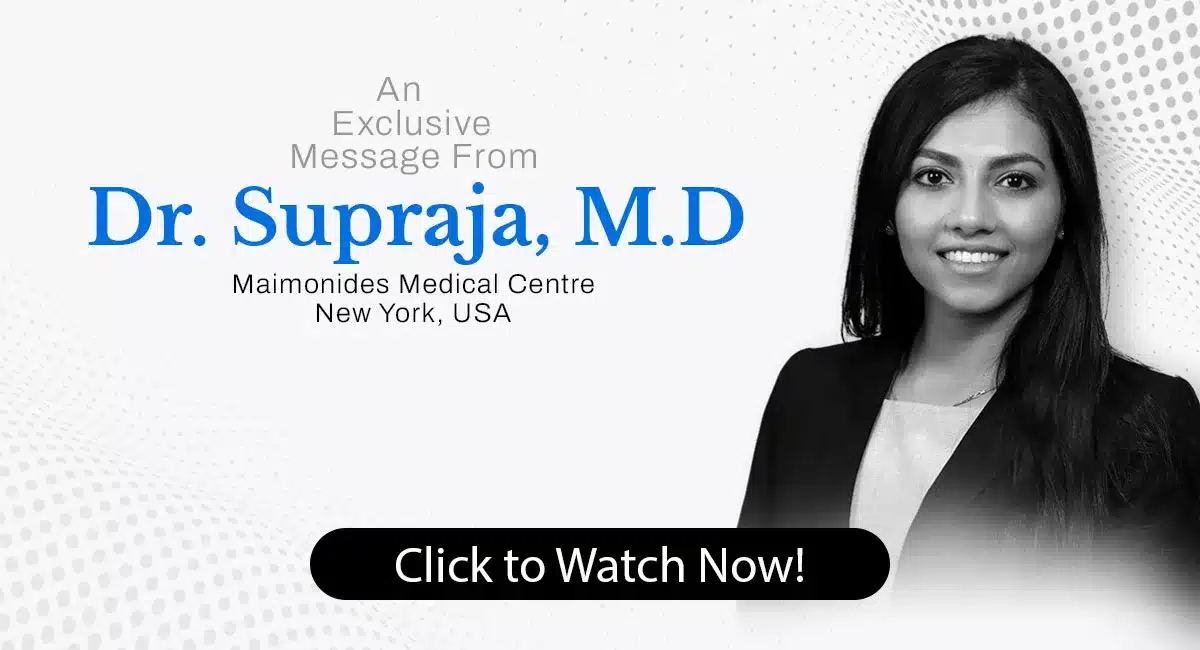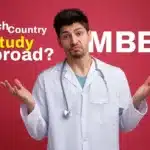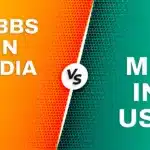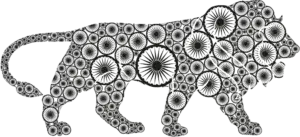Embarking on MBBS studies in the USA is a transformative journey for Indian students with aspirations to become globally recognized doctors. This article provides a comprehensive exploration of the MBBS to MD pathway, offering insights into strategic planning, the admissions process, career prospects, and financial considerations. With meticulous preparation and a clear understanding of the challenges and opportunities, students can successfully navigate the complexities of the US medical education system to achieve their dreams.
Key Takeaways
- Understanding the MBBS to MD transition in the USA is crucial, including the need for exams like the MCAT and USMLE.
- Strategic planning involves selecting the right medical school, preparing for the application process, and financial management.
- The admissions process is rigorous, requiring careful attention to eligibility, exam scores, and compelling application materials.
- Career prospects are promising, with opportunities for residency, specialization, and global medical practice.
- Financial considerations are significant, with costs upwards of $200,000, necessitating exploration of scholarships and funding.
Understanding the MBBS to MD Pathway in the USA

Comparing MBBS and MD Programs
In the United States, the path to becoming a doctor typically involves obtaining a Doctor of Medicine (MD) degree, which is equivalent to the Bachelor of Medicine, Bachelor of Surgery (MBBS) degree offered in other countries. Understanding the differences between MBBS and MD programs is crucial for international students, particularly those from India, who are considering medical studies in the USA.
The MD program in the USA is a postgraduate degree that requires students to first complete an undergraduate pre-medical course. In contrast, the MBBS is an undergraduate degree that integrates both the pre-medical and medical education. Here is a comparison of key aspects of MBBS and MD programs:
- Duration: MBBS programs typically last 5.5 to 6 years, while MD programs in the USA require 4 years of medical school following a 3 to 4-year undergraduate degree.
- Entrance Exams: MBBS admissions often require passing the NEET or similar exams, whereas MD programs in the USA may require the MCAT.
- Curriculum: The MD curriculum emphasizes research, clinical rotations in the US healthcare system, and preparation for the USMLE.
- Global Recognition: An MD from the USA is widely recognized and can lead to a broader range of global career opportunities.
For Indian students pursuing MBBS to MD in the USA, challenges exist but can be overcome with strategic planning and understanding of the pathways. Two main pathways include the USMLE route and the Fast Track MD Program for residency match.
Navigating the Transition from International MBBS to US MD
For international MBBS graduates, particularly from India, the transition to an MD program in the United States is a complex process that requires a strategic and informed approach. Understanding the nuances of the US medical education system is crucial for a successful transition. The USMLE route and the Fast Track MD Program are the two main pathways available, each with its own set of requirements and benefits.
- USMLE Route: Involves passing the USMLE Steps 1 and 2, followed by securing a residency match in the US. This path demands a strong foundation in medical knowledge and clinical skills, as well as the ability to adapt to the US healthcare system.
- Fast Track MD Program: A 4-year program designed for international students, which includes theoretical sciences and clinical rotations in the US, potentially simplifying the residency match process.
The choice between these pathways should be aligned with your long-term career goals and the resources at your disposal.
It is essential to gain clinical experience in the US healthcare system and to build a strong professional network. This can be achieved through research, volunteering, and clinical rotations. Additionally, securing strong Letters of Recommendation (LORs) from US-based clinicians or academics can significantly enhance your residency application. Preparing for the cultural and academic differences between the MBBS and MD programs will also be a key factor in your success.
Key Steps for Indian Students
For Indian students, the journey to an MD in the USA begins with a clear understanding of the pathway from an MBBS degree to an American MD. Strategic planning and early preparation are essential. Here are the key steps to consider:
- Eligibility Criteria: Ensure you meet the academic and language proficiency requirements. A strong foundation in science and English proficiency tests like TOEFL or IELTS are often mandatory.
- Pre-medical Coursework: Complete the necessary pre-medical courses, which may include subjects like biology, chemistry, and physics.
- Standardized Tests: Prepare for and take exams such as the MCAT, which is a critical component of the application process.
- Clinical Experience: Gain clinical exposure, which can be a significant advantage during the application process.
- Financial Planning: Understand the costs involved and explore scholarship and funding options to manage the financial burden.
The transition from MBBS to MD involves not only academic preparation but also adapting to a new educational and cultural environment. Proactive research and networking with professionals who have successfully made this transition can provide invaluable insights.
It is also important to be aware of the USMLE Steps 1 and 2, as passing these exams is a prerequisite for medical licensure in the USA. Indian students should aim to secure strong Letters of Recommendation and build a well-rounded profile to enhance their residency match chances.
Strategic Planning for MBBS Studies in the USA

Choosing the Right Medical School
Selecting the right medical school is a critical step in your journey to becoming a doctor in the USA. It’s not just about the prestige of the institution, but also about finding a place where you can thrive academically and personally. Your list should include schools that you have genuine interest in attending and that align with your career goals and learning style.
When considering where to apply, balance is key. You should aim to apply to a mix of reach, match, and safety schools. Reach schools are highly competitive, match schools align with your qualifications, and safety schools are where your credentials exceed the average admitted profile. Here’s a suggested distribution:
- Reach Schools: 2-3
- Match Schools: 3-4
- Safety Schools: 2-3
It’s crucial to submit applications to a variety of universities to increase your chances of acceptance, without compromising on quality.
Finally, use tools like spreadsheets to stay organized and track your progress. By taking a strategic approach, you can enhance your prospects of embarking on your medical school journey in the U.S.
Preparing for the Application Process
The journey to securing a spot in a U.S. medical school is multifaceted, requiring a strategic approach to the application process. Early preparation is key, as it allows for the identification of preferred medical schools and an understanding of their unique requirements for international applicants. A well-planned application strategy should include meticulous preparation of all components, such as the Medical College Admission Test (MCAT), letters of recommendation, and personal statements.
To increase the likelihood of acceptance, it’s advisable to apply to a mix of reach, match, and safety schools. This ensures a range of possibilities without compromising on quality. Here’s a simple list to keep in mind:
- Research and shortlist medical schools
- Understand specific criteria for international applicants
- Prepare application components thoroughly
- Apply to a variety of schools
It’s essential to submit applications to as many universities as possible to increase your chances of acceptance.
Staying organized with deadlines and requirements is crucial. Utilize tools like spreadsheets or dedicated software to track progress and ensure no detail is overlooked. By combining early action with a strategic mindset, Indian students can enhance their prospects of embarking on their MBBS dreams in America.
Financial Planning and Scholarships
Embarking on MBBS studies in the USA requires meticulous financial planning, given the substantial costs involved. Early financial planning is essential to manage tuition, living expenses, and additional costs effectively. Scholarships play a critical role in reducing the financial burden for international students, including those from India and the UAE.
Academic scholarships are awarded based on exceptional academic performance, while government-funded scholarships may be available upon acceptance of an institution’s offer. It’s important to research and apply for financial aid opportunities early in the application process to increase your chances of receiving assistance.
Financial constraints are real, but so are scholarships. Many students miss out on available financial aid because they don’t look for it or assume they won’t qualify.
Here are some steps to consider when seeking scholarships:
- Identify scholarships for which you are eligible, including those specifically for international or Indian students.
- Prepare a compelling application, highlighting academic achievements and potential contributions to the medical field.
- Meet all deadlines and provide all required documentation to ensure your application is considered.
By combining a strategic approach to selecting medical schools with a thorough search for scholarships, students can make their dream of studying MBBS in the USA a reality.
The Admission Process for MBBS Programs in the USA

Eligibility Criteria and Requirements
Embarking on the journey to study MBBS in the USA requires meticulous attention to eligibility criteria and requirements. Understanding the prerequisites is the first step towards a successful application. Eligibility often hinges on a strong foundation in science subjects, typically evidenced by high school performance. Additionally, proficiency in English is a prerequisite, validated by standardized tests like TOEFL or IELTS.
The admission process for MD programs in the USA is highly competitive, focusing on academic excellence and a well-rounded profile.
It is imperative to distinguish between the prerequisites that are absolutely required and those that are recommended. Failing to meet the required criteria will halt your application process, while recommended courses, though beneficial, are not deal-breakers. Here’s a quick checklist to help you stay on track:
- Completion of 12th grade with a focus on science subjects
- Proficiency in English (TOEFL/IELTS scores may be required)
- Minimum GPA and pre-medical coursework (varies by program)
Each medical school may have unique letter requirements, such as a mandatory recommendation from a current employer for working applicants. Ensure you check the exact requirements for each school you’re applying to. If you’re aiming to attend a school with specific grade expectations for required courses, know these grades and strive to meet them to avoid early elimination from the applicant pool.
Understanding the MCAT and USMLE
The journey to medical school in the USA is marked by critical examinations, with the MCAT (Medical College Admission Test) serving as the gateway. Understanding and applying scientific concepts is more crucial than mere memorization. As you prepare, utilize comprehensive guides and practice tests to enhance your comprehension of the material.
Following the MCAT, the USMLE (United States Medical Licensing Examination) becomes the focus. The USMLE is a multi-step exam that assesses your ability to apply medical knowledge and concepts in a practical, patient-centered way. The steps of the USMLE are typically taken during and after medical school:
- Step 1: Focuses on basic science knowledge.
- Step 2 CK (Clinical Knowledge): Tests clinical sciences knowledge.
- Step 2 CS (Clinical Skills): Assesses clinical skills through simulated patient interactions.
- Step 3: Evaluates the ability to practice medicine unsupervised.
Acquiring a deep understanding of the USMLE requirements is crucial. Gaining clinical experience in the US healthcare system is often a prerequisite for residency programs, and building a strong profile with research publications and relevant medical certifications can enhance your application.
The MCAT and USMLE are not just assessments; they are milestones that shape your medical career. A strategic approach to preparation, including early study and consistent practice, is essential for success. Remember to balance your study schedule with self-care to prevent burnout, and seek guidance from mentors who have successfully navigated these exams.
Securing Letters of Recommendation and Personal Statements
The process of securing letters of recommendation (LORs) is a critical component of your medical school application. Approach potential referees early, providing them with your transcripts, a draft of your personal statement, and your CV to facilitate a comprehensive and supportive letter. Ensure that your LORs reflect your academic and extracurricular strengths by choosing mentors who can speak to your capabilities and suitability for medical school.
When crafting your personal statement, it’s essential to convey your passion for medicine and your readiness for the challenges of medical school. This is your opportunity to present yourself beyond grades and test scores. Seek professional help if necessary to ensure your statement is compelling and well-written.
It’s important to check the specific letter requirements for each medical school you’re applying to, as they may vary. Typically, you should aim to secure:
- 1 or 2 letters from a science professor who graded you
- 1 letter from a non-science professor who graded you
- 1 letter from a supervisor at a key extracurricular activity
- 1 additional academic letter as back-up
- 1 additional non-academic letter as back-up
Crafting a strong personal statement and securing impactful LORs are pivotal steps in showcasing your readiness for the medical profession.
Career Prospects After Completing MBBS in the USA

Residency and Specialization Opportunities
Upon completing an MBBS in the USA, graduates face a pivotal moment in their medical careers: choosing a residency program. Residency is the gateway to specialization, where doctors receive extensive training in their chosen field. Graduates with an MD degree often have a broader range of residency options compared to their DO counterparts, with many opting for specialties like surgery, which require rigorous training and offer diverse career paths.
Residency programs in the USA are accessed through the Electronic Residency Application Service (ERAS), and both DO and MD degrees are accredited by the Accreditation Council for Graduate Medical Education (ACGME). The choice of specialty is influenced by the graduate’s interests, career goals, and often, the philosophy of their medical education. For instance, many DO graduates lean towards primary care specialties such as internal medicine, family medicine, and pediatrics, reflecting the holistic approach of osteopathic medicine.
The competition for residency spots is intense, and strategic planning is essential. Indian students must be well-prepared to showcase their clinical experience, academic achievements, and commitment to the medical profession.
Here is a list of common steps to secure a residency position:
- Gain clinical experience and shadowing hours
- Achieve high scores on the USMLE
- Obtain strong Letters of Recommendation (LORs)
- Prepare a compelling personal statement
- Apply broadly and interview well
For Indian students, the journey to a successful residency match is often marked by strategic planning and a thorough understanding of the US medical education system. Leveraging resources like Divine EAC can provide invaluable guidance throughout this process.
The Impact of US Medical Training on Global Career Options
The completion of an MBBS degree in the USA opens doors to a myriad of global career opportunities. American medical training is highly esteemed worldwide, offering graduates a competitive edge in the international job market. The US MD degree is recognized for its rigorous clinical training and comprehensive curriculum, which equips students with the skills necessary to excel in diverse healthcare environments.
Global mobility is a significant advantage for US-trained doctors. They can pursue careers in various countries, often without the need for additional examinations. Here are some of the career paths available to US medical graduates:
- Clinical practice in private or public healthcare settings
- Research and academia
- Leadership roles in healthcare administration
- Global health initiatives and policy-making
- Medical consultancy and entrepreneurship
The versatility of a US medical degree allows for a seamless transition into different healthcare systems, fostering a truly international career.
Financial remuneration is another aspect where US-trained doctors benefit. They often command higher salaries compared to their counterparts from other countries. This financial advantage, coupled with the global recognition of their qualifications, makes studying medicine in the USA a potentially lucrative investment in one’s future.
Networking and Professional Development
Networking is a cornerstone of professional growth in the medical field. For MBBS students in the USA, it is imperative to build a robust network of contacts that includes peers, faculty, and medical professionals. Engaging with these connections can lead to mentorship opportunities, research collaborations, and career advice. The process of networking should be approached strategically, with students attending medical conferences, joining professional organizations, and participating in online forums related to their field of interest.
Networking for Medical Students is not just about exchanging business cards; it’s about cultivating relationships that can provide support and guidance throughout one’s career. Students should seek out mentors who can offer insights into the nuances of the medical profession and help navigate the complexities of the healthcare system. Additionally, maintaining a professional online presence on platforms like LinkedIn can facilitate connections with a global medical community.
By actively participating in networking and professional development activities, MBBS students can enhance their understanding of the medical landscape and position themselves for success in their future careers.
Here are some steps to consider for effective networking:
- Attend medical conferences and seminars to meet industry experts.
- Join professional medical associations to access resources and networking events.
- Engage in research projects or volunteer work to build a professional reputation.
- Connect with alumni and professionals through social media and professional networking platforms.
- Participate in mentorship programs to gain insights and advice from experienced practitioners.
Navigating Financial Considerations for MBBS Students

Cost of Education and Living Expenses
The cost of studying MBBS in the USA can be a significant barrier for many aspiring medical students, particularly those from international backgrounds. Tuition fees, which are the primary expense, can vary widely between institutions. Accommodation, food, and transportation are additional living expenses that must be budgeted for. It’s essential to consider all potential expenses, including books, equipment, exam fees, application fees, and travel for interviews.
It’s important to consider all potential expenses and seek financial aid opportunities to offset the costs.
To give a clearer picture of the financial requirements, here’s a breakdown of the average costs associated with MBBS studies in the USA:
- Tuition and Fees: The cornerstone of educational expenses.
- Living Expenses: Includes accommodation, food, and transportation.
- Additional Costs: Exam fees, application fees, and travel for interviews can add up.
Scholarships, grants, and student loans are available to international students, but competition can be intense. Researching and applying for financial aid early can increase your chances of receiving assistance. Some medical schools offer work-study programs to help students finance their education while gaining valuable experience.
Exploring Scholarship and Funding Options
Navigating the financial landscape of medical education in the USA can be daunting for international students. Scholarships and funding options are pivotal in managing the high costs associated with an MBBS degree. It’s essential to explore all available financial aid resources early in the application process.
Financial constraints are real, but so are scholarships. Many students miss out on available financial aid because they don’t look for it or assume they won’t qualify.
Here are some steps to consider when seeking scholarships:
- Begin by researching scholarships offered by medical schools and independent organizations.
- Explore service-based scholarships which may require a commitment to work in underserved areas after graduation.
- Consider loan forgiveness programs that reward working in critical shortage facilities.
Financial planning is crucial, with the cost of medical education in the US being high, but scholarships and financial aid opportunities can alleviate some of the burden. Additionally, some consultancies offer tailored guidance to help students secure scholarships, with services that may include strategic planning and application assistance. For instance, Divine EAC provides support for Indian students, potentially offering scholarships up to $90,000. It’s essential to strategically plan each step of your financial journey, from understanding eligibility criteria to preparing compelling applications.
Budgeting and Financial Management for Medical Students
Embarking on an MBBS degree in the USA requires meticulous financial management. Developing a comprehensive budget is essential to ensure that all expenses are accounted for, from tuition fees to living costs. Start by listing all potential income sources, such as savings, family contributions, and part-time work. Then, itemize your expenses, considering not only tuition but also accommodation, books, equipment, and daily living costs.
Financial planning is crucial for pursuing an MBBS degree in the US. Scholarships and grants can help cover costs. Explore all financial aid options early in the application process. To assist with this, many universities offer detailed breakdowns of expenses, which can be used to create a more accurate budget.
Financial planning is not just about covering costs, but also about securing your future. Consider long-term loan repayment plans and potential loan forgiveness programs that may be available to you.
Lastly, it’s important to explore all avenues for financial aid. Scholarships, grants, and work-study programs can provide much-needed relief. Keep a close eye on application deadlines and requirements to maximize your chances of receiving aid.
Embarking on the journey to become a doctor is a challenging yet rewarding path, especially for MBBS students who must navigate complex financial considerations. At Divine Education Abroad Consultancy, we understand these challenges and offer a Fast-Track MD Pathway that eliminates the need for MCAT and NEET, ensuring a smoother transition to your medical career in the US/UK. With our 97x higher success rate and 100% admission guarantee, we’re committed to guiding you every step of the way. Don’t let financial constraints hold you back; explore our affordable education pathways and scholarship opportunities. Ready to take the first step towards a rewarding medical career? Visit our website now to learn more and find out how we can help you achieve your dreams.
Conclusion
In conclusion, the journey to achieving an MBBS degree in the USA is a challenging yet rewarding path for Indian students with dreams of becoming doctors. This comprehensive guide has explored the intricacies of the MBBS to MD pathway, the strategic planning required, the financial considerations to keep in mind, and the rigorous admission processes to navigate. It has also highlighted the bright career prospects that await those who successfully complete their medical education in the USA. With determination, thorough preparation, and a clear understanding of the steps involved, Indian students can turn their aspirations into achievements and embark on a fulfilling medical career on a global stage.
Frequently Asked Questions
Can international students apply to MBBS programs in the USA without an MCAT score?
Typically, the MCAT is a requirement for most medical schools in the USA. However, some programs, such as BS/MD degrees, may offer conditional admission without an MCAT score, provided other program requirements are met.
What are the financial considerations for studying MBBS in the USA?
The cost of education for MBBS studies in the USA can range from $200,000 to $300,000. Students should explore scholarships, funding options, and financial planning to manage these expenses.
Are there accelerated pathways for MBBS studies in the USA?
Yes, there are accelerated programs like BS/MD or BA/MD that allow students to complete undergraduate and medical education in a reduced timeframe, often 6 to 7 years.
What is the importance of strategic planning in applying to MBBS programs in the USA?
Strategic planning is essential for navigating the application process, including choosing the right medical schools, preparing for exams like the MCAT, and managing financial considerations.
How can Indian students navigate the transition from MBBS to MD in the USA?
Indian students must understand the USMLE requirements, gain clinical experience in the U.S. healthcare system, and prepare thoroughly for the application process.
What are the career prospects after completing an MBBS in the USA?
Completing an MBBS in the USA opens up global career options, including residency and specialization opportunities, and provides a platform for networking and professional development.














